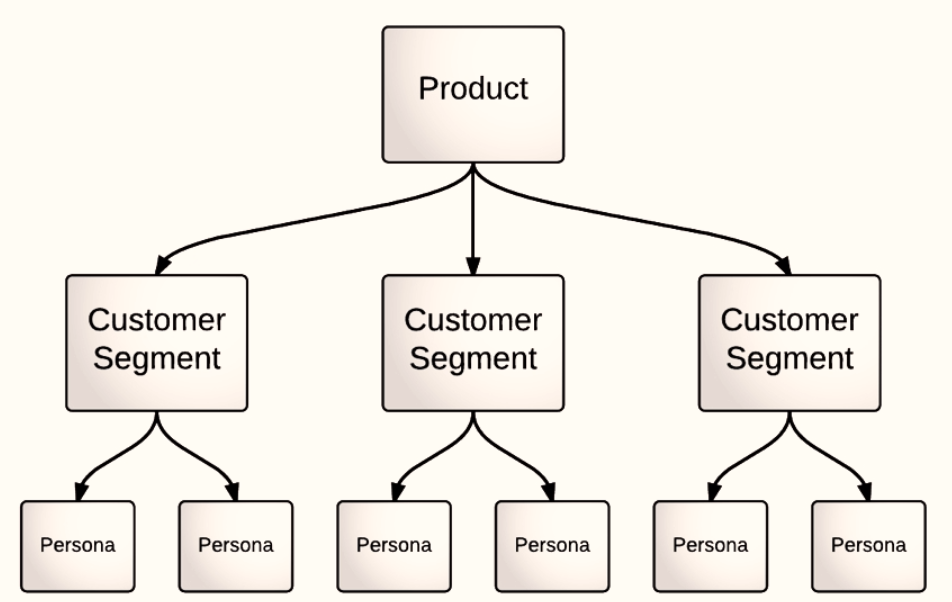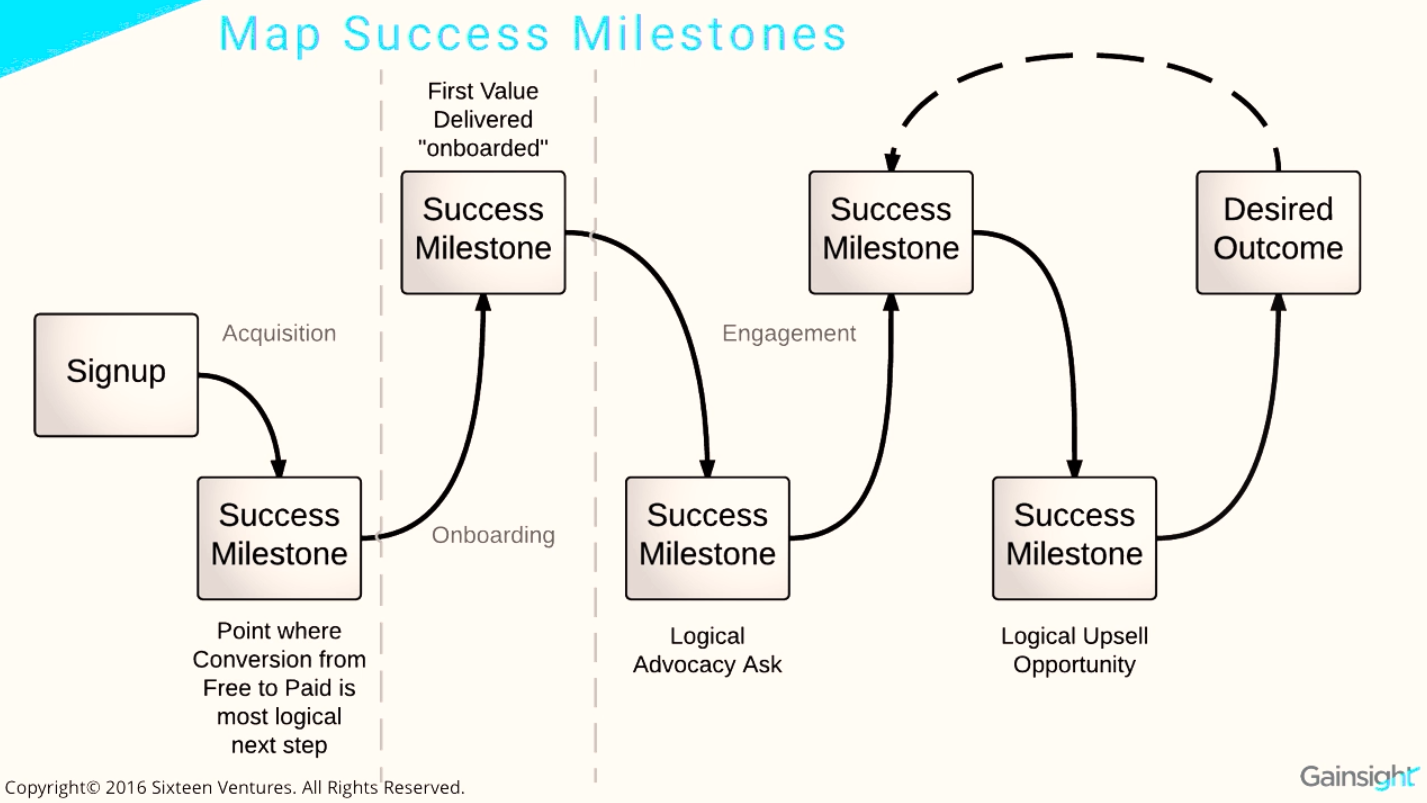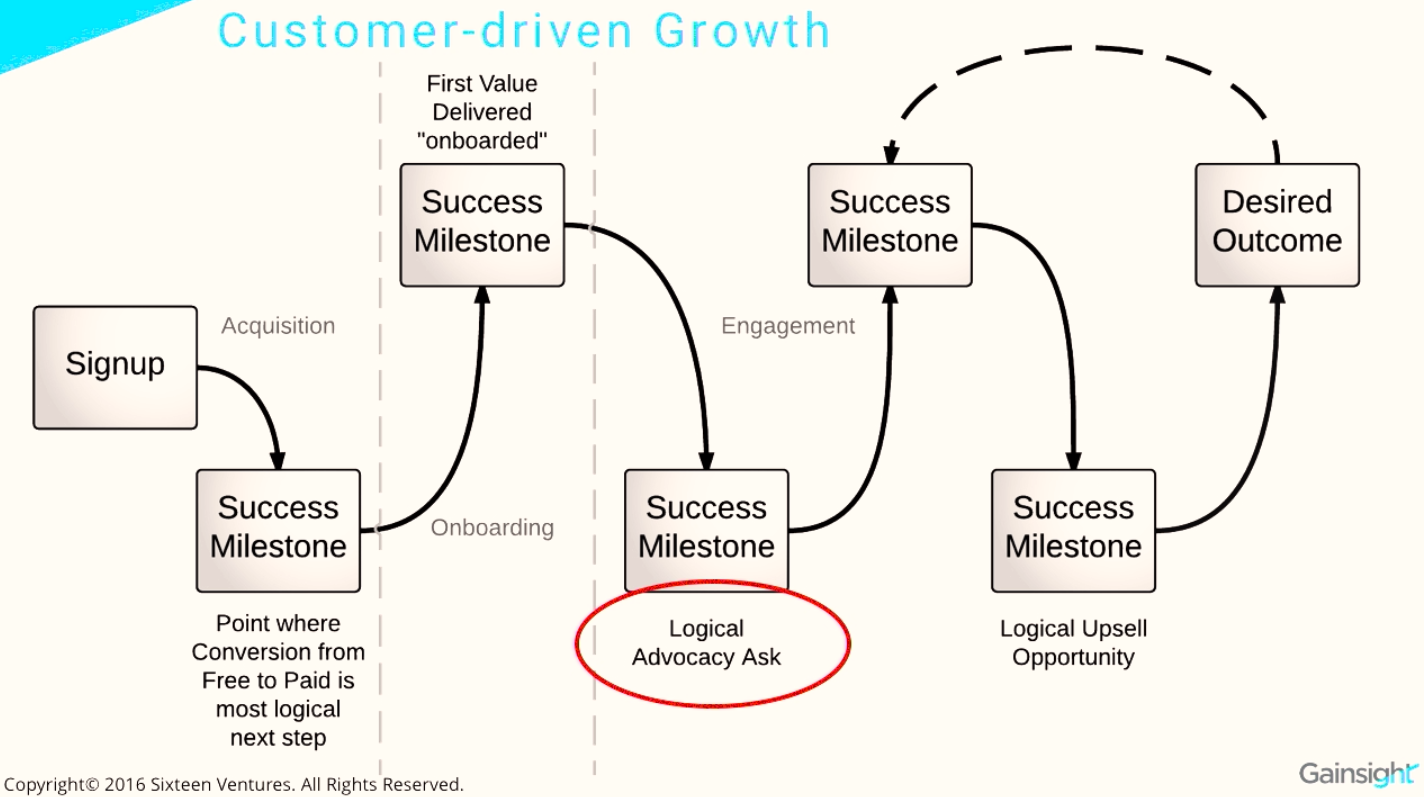Customer success isn’t about saving your customers from drowning. It’s about making sure they don’t fall into the water in the first place. In his 2016 Advocamp Amp Talk, Lincoln Murphy, former Customer Success Evangelist at Gainsight, explains how to align your advocacy and customer success strategies to keep both your customers and your business swimming along strongly.
Peter Drucker said, “The purpose of business is to create and keep a customer.” Well, actually, it’s to keep a customer, and get that customer to expand their use over time and then become an advocate. Very often you only see the first part, “The purpose of business is to create a customer.”
In this way, talking about advocacy is really also talking about making customer success the foundation of your advocacy programs.
What customer success is not
You don’t have to agree with me on these points, but at least you’ll know where I’m coming from. Customer success is not reacting to customers who are angry or having problems with your product. In other words, customer success is not customer support.
Customer success is also not about making your customers happy. It’s not about customer delight or happiness. It’s about making your customers successful.
I can’t solve for happiness. I can’t help you be emotionally happy. However, I can help you be successful in the context of our relationship around our product. If I make you successful, there’s a chance you’ll be happy, but I can’t guarantee that or worry about it too much.
Sometimes our best customers are the ones who never seem happy. The ones who always push back. The ones who contact support. The ones who are always asking for things we don’t have. They’re always breaking stuff because they’re trying new things.
Customers who never seem happy, when we look at the additional context, are in fact quite successful. They actually bought more from us. Maybe they were even advocates for us. Who would’ve thought? On the flip side, happy customers will look you in the eye, say that they’re happy, give you a high NPS score, and then leave. It’s not about customer happiness.
Customer success is also not about rescuing customers. If you wake up in the morning, jump on a helicopter, go out, and save people from drowning, that’s fantastic. You’re a hero. You’re better than I am. If you wake up in the morning and you go to work to save customers who are about to churn, you’re not a hero, you’re working for a company that’s doing everything wrong. That’s not cool. That shouldn’t be your job.
Sometimes we have to save customers. That’s begging, borrowing, stealing, making promises we hopefully can keep, offering discounts, or whatever. That’s not customer success. In this scenario with the helicopter, customer success would be that we told you, “The surf is too high, so don’t go swimming.” That’s what we would do. We wouldn’t let you get in this position. We don’t need to rescue you because we’re solving for your success.
What customer success is
My definition of customer success is when your customers achieve their desired outcome through their interactions with your company.
Let’s unpack this a little bit. We’ll start with interactions. It’s not about when your customers use your product. It’s about everything that happens between you and the customer, which means back to the very beginning with sales and marketing. When you first touch the prospect, all the way through to when they become a customer—the buying process, the onboarding, the overall engagement. Customer success is about all of the interactions.
The other part was desired outcome, which has two pieces: required outcome and appropriate experience. This is what the customer needs to achieve and the way they need to achieve it.

If you sell something to technology folks or very early stage startups, you might be able to get away with an API, some lightweight documentation and a Slack channel for community support. If you sell the same thing to an enterprise customer, you have to have a full blown UI, you have to be able to support three-year contracts, have 24/7 support, and all of that other stuff.
The required outcome could’ve been exactly the same. In fact, you could be selling the same product to those two different customer segments. However, you have to understand what the desired outcome is. The required outcome is what they need to do. The appropriate experience is how they want to achieve that. By the way, if you’re a SaaS company, the appropriate experience starts with the fact that they want to achieve their required outcome through the use of a SaaS product, right? But it starts to be very different on a customer segment basis.
Once you understand the desired outcome, you can start to solve for it. Customer success, being all about helping your customers achieve that desired outcome, should become the purpose of your company.
Yes, the purpose from the investor’s or the executive’s standpoint is that we’re here to make money, but our actual purpose from a market standpoint and the whole reason we’re in business is to help our customers achieve their desired outcome. If we don’t do that, why do we even exist? Think about that. This is pretty powerful stuff.
If we understand what the desired outcome is on a customer segment basis, we can help our customers achieve it. If we do that, we get to reap the rewards, like higher adoption and retention, where customers expand their use and become advocates.
Let me be very clear. Focusing on desired outcome will result in those things, but not magically. You want things to happen because of your efforts, not in spite of them. So, what you need to do is have something like customer success management.
From customer success to customer success management
I separate customer success and customer success management because they’re different. One is an operating philosophy and one is the actual orchestration.
Customer success management is the proactive orchestration of the customer’s journey towards their ever-evolving desired outcome. As you can tell, I like to make up definitions.
I want to touch on ever-evolving. I don’t want my customer to be the same in a year or two years. I don’t want to create a customer journey around the idea of a static customer. I need to keep the customer’s ascension model in mind, or create an ascension model around what that customer’s desired outcome will evolve to. I want to be able to operationalize this and really orchestrate it.
This goes to the other piece, proactive orchestration. What are the things your customer has to do, and what do we have to do for them in order to get them to achieve that desired outcome?
Whatever that is, we have to orchestrate it. We can’t just let it happen.
That’s customer success management. I like to say customer success management is the real customer relationship management. I wish customer relationship management wasn’t already taken, but it is. Unfortunately it’s just a contact list of leads and other things. It really doesn’t extend into the customer life cycle.
We live in this weird world where everything is about sales, and everything after the sale is called post-sales. That needs to go away. If a customer’s going to be with us for three, five, seven, ten years, which is very realistic, why is that only called post-sales? We can’t think like that. It has to be about customer relationship management.
Making customer success the foundation of your business
Start with your product and look at the customer segments. Ultimately what we’re doing is starting with the customer. If you have several products, you want to do this for each product.

What is the segment that makes the most sense? It could be based on revenue, or it could be based on use case or vertical. It’s going to be dependent on your business. Each customer segment is going to have a different desired outcome.
It’s easy with things like verticals. Obviously they’re going to have a different desired outcome. If we segment based on customer size, 90 percent of the things they have to do may be the same, but those 10 percent differences across the customer segments make or break whether or not they feel successful in their relationship with us.
We want to map out the milestones. This is kind of a cartoon flow chart. You don’t have to do this. It’s just a line listing that says, “Here are the things that a customer has to do in order to be successful.” Those are success milestones. At the macro level, these are the success milestones that a customer has to go through on their way to achieving their desired outcome. In between those, we have micro level steps that they have to take. Along the path we can figure out how to operationalize an advocacy program.

McKenzie says customers who come in through advocacy stay longer and buy more. Influitive says customers who advocate for you become stronger customers themselves.
This makes advocacy something we can’t leave up to chance. We have to orchestrate it. We have to manage expectations. Let your customers know, very simply, “Hey, I’m here to make you successful. When I do that, will you help me be successful?” Or something along those lines.
Let them know that at some point you’re going to make an advocacy ask. This is so simple, yet it’s something we tend to not do. Instead we spring it on them later on. Somebody they don’t know contacts them to be a reference or to leave a review somewhere, and it’s somewhat random.
The timing of advocacy
If you make things with your customer timed—let’s say the customer’s been with us 30 days so I want to make this advocacy ask, or they’ve been with us 90 days, so it’s time to get them to do a testimonial for us—what seems logical to you may seem incredibly random to them. Customers achieve success on their own cadence.
They’re not ready. They haven’t achieved any value. Why would they want to be a reference for you? Why would they want to leave a review? Why would they even want to send a tweet on your behalf?
We have to tie advocacy asks to success milestones. It’s so much easier to ask a customer for advocacy if I know they’ve just done something on their path to achieving their desired outcome. That’s milestone-based advocacy versus random advocacy asks, which we don’t want to do.

Going back to the success milestone diagram, you can see I circled one of the success milestones that has what I would call a logical advocacy ask with it. They’ve done something, so let’s ask them to be an advocate for us. I’ll define what a logical advocacy ask is and what it takes to recognize that advocacy ask opportunity. How do we actually activate that advocate?
What might logical advocacy asks be? They’re probably going to be graduated over the course of the life cycle with the customer. You want to start early and manage those expectations with the customers. As soon as they achieve some value, or as soon as they start to see the true value potential in their relationship with you, you can start to make these asks. If you do it too early, or do it at the wrong time, you’re going to be missing out.
Even if a customer is achieving success milestones at a faster cadence than normal, you can still use that. Tie these advocacy asks, from tweets to references to referrals, to land and expand your relationship with them. Internal advocacy is a big deal. Customers may not be able to talk about you publicly, but they could be an advocate for you internally. It’s one of those things that we sometimes overlook.
The types of customer advocacy are well known. None of this is new, but how do we actually make it work? We orchestrate it. The key takeaway here is that customer success starts with the customer.
Here are the steps you can take to achieve customer success through advocacy:
- Understand the desired outcome of each segment for each of your products.
- List the steps required to achieve the desired outcome for each segment.
- Identify the success milestones and the logical advocacy requests associated with each of them. By the way, be careful. Not every success milestone is going to have an advocacy ask. Some success milestones will have an upsell opportunity.
- Orchestrate the entire advocacy process. If advocacy is really as important as we think it is, then we recognize that we need to put some systems in place and orchestrate this process.
Related: Advocacy Marketing Dictionary – Customer Relationship












































